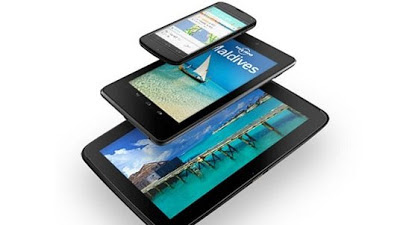After numerous leaks and a canceled launch event, Google finally unveiled the revamped Nexus line-up. The product & pricing decisions seem to suggest that the "Nexus" brand's target segment is shifting from enthusiasts to the mass market. Let's take a look at the impact these products could have on the market.
Nexus 4
Even though the Nexus 4 sports high-end specifications, Google & LG have priced the unlocked versions of the devices at extraordinarily aggressive price points ($299 for 8GB, $349 for 16GB). The pricing strategy, in conjunction with the lack of LTE, suggests that Google may be trying to exclude carriers from having any influence on the device firmware or updates.Google also announced that the device will be available via T-Mobile for $199, with a two year contract, on par with other high-end smartphones. That contract price implies that T-Mobile will have to pay a subsidy of just $100 per device, which may be the lowest for any subsidized smartphone. While the lack of LTE compatibility would minimize adoption in the US, European carriers may start pushing the Nexus 4 to get some subsidy relief. With this strategy, the Nexus 4's pricing becomes very appealing for all direct customers (carriers for locked version, consumers for unlocked version). While it would make more financial sense for consumers to buy the phone unlocked, low awareness could play into the hands of wireless carriers.
Nexus 7
After all the rumors, Google & Asus finally refreshed the Nexus 7 by dropping the price of the 16GB version to $199 and introducing a 32GB version at $249. They also introduced a 3G enabled Nexus 7, with 32GB storage for $299. Asustek's CFO also stated the following to say about Nexus 7 sales:At the beginning, it was, for instance, 500K units a month, then maybe 600, 700K. This latest month, it was close to 1 million
His quote suggests that Nexus 7 sales were about 1.5-2 million in Q3 (based on the launch date). These numbers are below my Q3 estimate of 2.9 million. But the current run rate makes my Q4 estimate of 3-5 million well within reach. The upgraded storage configurations should ensure that demand continues to grow.
Nexus 10
Finally, we have the Nexus 10. The Nexus 10 comes with a 2560x1600 display and a dual-core A15 processor, starting at a price of just $399. The price really surprised me, as Samsung has been very protective of their tablet margins so far. With this product, Google is basically offering a product with specifications comparable to the iPad 4, at the price of an iPad 2.The product-price combination should ensure a positive reception for the Nexus 10, but I'm more concerned with the marketing strategy for the product. I had previously stated that the Nexus 10 would need an easily marketable, desktop-like feature to draw consumer attention. Google seems to have a very similar idea in mind, as they've pitched the Nexus 10 as a "truly shareable tablet", thanks to Android 4.2's multiple user accounts feature. While their message is right on the money, I think it needs to be delivered through a strong visual. This could be accomplished by showing the integration of "Face Unlock" with the multiple user accounts feature.
Android tablets have so far struggled in the 10-inch tablet space, but the Nexus 10 is a good first step in closing that gap. However, consumer response is likely to be heavily dependent on a focused marketing strategy.
Conclusion - The new Nexus devices truly highlight the change in Google's branding strategy. While Nexus devices have never been top sellers, the strategy with the new line-up could begin to attract more mainstream consumers.








